

As always at CloneIntel, only Lucas-era on-screen material is canon, as well as disney-era on-screen material which does not conflict with
Lucas canon. Legendary universe material, disney-era guides, video games, books, and comic books are not canon. Any information
from them is used only to fill informational holes, and only if said information serves to clarify and reinforce the Lucas canon.
The Galactic Republic and the Neutral Systems
The exact nature of the relationship between the government of the Republic, led by the Galactic Senate on Coruscant, and the many planets
which were "part" of the Republic sometimes seems confusing in canon material, or even somewhat contradictory. It is sometimes portrayed
as highly-centralized union similar to the United States, and at other times a severely-limited association similar to the United Nations. This
is mostly a superficial contradiction, as examination of canon indicates that it is more the product of complexity and galactic history than
the result of a failure by creators to maintain continuity between writers of different episodes. The issue of planetary sovereignty under
the Republic is the primary political issue within the galaxy during the prequel films and the Clone Wars, which explore a galactic struggle
between those who believed the Republic had too much authority and those who believed it wasn't centralized and powerful enough.
The balance of Republic authority and planetary independence was to some degree in flux in this time period, which highlighted these
contradictions. In addition, the history of how planets and regions joined the Republic was also a factor in their relationship to the state.

Federal Structure of the Galactic State
The Galactic Republic is a federal state, also known as a federation, which like most elements of Lucas SW takes its inspiration from other,
similar organizations in real Earth history or from other science fiction. Many elements of the Republic borrow from imperial states like
ancient China, Japan, and Rome, as well as galactic empires from Asimov and other sci-fi, however as its democratic nature is a primary
feature, its relationship to its constituent members is best likened to other democratic organizations. Five states which the Republic best
resembles are briefly compared, ranging from the most centralized on the left to the most decentralized on the right:

In many ways, the Republic is similar to a strong federal republic, similar to Germany in terms of the unique history of its components,
but more similar in developmental history to the United States. The Republic, like the US, had a colonial history which saw its expansion
largely include new members which were already associated with the core of its civilization, while also absorbing, surrounding, or violently
suppressing whatever other civilization existed in those regions. Its constitution spelled out a division of powers which ensured that those
which joined would retain local control, while also being subject to specified federal jurisdiction. Like the United States, the Republic
would not tolerate secession, and despite its supposedly limited federal government, would eventually erode the rights of its members
in favor of a more powerful central state. The Republic is even more similar to the Russian Federation, which is in many ways very similar
to the United States, but less uniform in the relationship between its members and its central government. This is known as asymmetric
federalism, where some subdivisions of the federation have more autonomy than others, usually as a product of their history or unique
demographics. Russia's oblasts are mostly populated by ethnic Russians, similar to the many Human-dominated ex-colony worlds which
form the bulk of the Republic. Russia's autonomous republics which have more authority and self-rule, are similar to the non-Human
planets and Human planets which were historically independent before becoming absorbed by Republic territory.


The Republic's ultimate form was the product of both its colonial history and that of the civilizations it engulfed, as was Russia's. The colonial
history of the United States is not dissimilar, but native groups were decimated rather than subsumed, and never reemerged politically later
in history, nor were eventually given state-level jurisdiction over their historical lands. Both Russia and the United States have legal regimes
and traditions which reflect their colonial history, just as the Republic, and a society which consciously or unconsciously favors the culture
which forged the territory into a single entity. In all three instances, colonization of existing populations and new settlement by colonists
from their core regions was directly connected to the establishment of roads and railways, or in the case of the Republic, hyperspace
routes. In terms of both its history and ultimate governmental form, the Republic is close to the United States, but closer to Russia.


Despite the many differences in economic inequality, economic system, social order, et cetera, the legal regime of the Republic's federal
government might actually be closest in form to the United Federation of Planets from Star Trek. The Federation is a democratic,
interstellar order like the Republic, which maintains a unitary government, military, currency, and other federal institutions, but which
is constrained by its values and laws not to interfere in the internal affairs of its member worlds. In the same way, the Republic is similar
to the European Union, which is even less-federalized than the Federation and whose members ostensibly have national sovereignty.
Like the EU, the Republic is also dominated by its larger and richer members, whose influence outweighs that of its smaller members.
Additionally, both organizations are defined by an intersecting network of treaties, rather than a single, prefabricated constitution.

The Republic seems to be more federal than the EU, as the Republic will not allow members to leave, but unlike the Federation which is
formed by common ideology, the Republic was formed out of a desire to make a specific territorial region politically integrated, like the EU.
In the case of the EU, that is Europe, in the case of the Republic, it is the galaxy, which is also the primary way in which the Republic is
similar to the United Nations. The Republic, does not claim to rule the galaxy, but rather to hold jurisdiction over the galaxy to prevent
conflict and war and to enforce the principles of interstellar law. It therefore holds influence over the galaxy just as the UN does over
the Earth, without necessarily having the authority to police anything beyond interstellar affairs. The Republic also is supposed to
provide a forum for all voices in the galaxy, turning interstellar diplomacy into internal politics, thus preventing the return of interstellar
wars. The Republic is certainly far more federal than the UN in most ways, as it actually holds its own legislative and executive authority.


The Republic's federal government presided over the majority of known space, divided into 1024 sectors. These sectors are sometimes
called oversectors, as they all are subdivided into at least a few smaller sectors, also referred to as subsectors. Each oversector is organized
around a capital planet, which must be one of the 24,372 starsystems which were "members" of the Republic. These capitals were usually
historically entrenched, however could conceivably sometimes have changed, as each sector contained numerous member worlds. Only
member worlds had Senators, and only one per sector usually could be seated in the Galactic Senate, while the Republic's jurisdiction
contained more than a million worlds. Each Senate delegation therefore represented their homeworld alongside the other worlds of
their sector which had Senators who weren't present, and many thousands of non-member planets with smaller populations. Each
Senator acted as the leader of, and spokesperson for, a Sector Caucus, made up of Senators and representatives from the worlds of
that sector which did not sit in the Galactic Senate, which presumably would meet on a sector's capital planet for consultations. While
each world's planetary government was sovereign and independent, any member worlds were also subject to sector and planetary
bureaucracies led by the Senator from their sector. The majority of known planets were within one of these sectors, yet many simply
chose to have little association with the Republic, some of which had large populations. They would therefore enjoy only limited
Republic interference in their external affairs, but also would not receive any of the benefits of Republic resources and development.
This structure gave the Republic a degree of jurisdiction over the entire galaxy without directly controlling any worlds against their will.
Republic Jurisdiction and Planetary Sovereignty
The 24,372 members of the Republic were the only worlds directly connected to the Republic's federal government, through the sector
bureaucracy led by their sector's Senator in the Galactic Senate. Any world with a less-significant population which claimed direct affiliation
with the Republic was connected to the federal government through that same bureaucracy, and subject to whatever agreed upon political
order existed locally. Most worlds in the galaxy fall into one of three categories: homeworlds of sentient races, colonial societies, and hybrids
of the two. Worlds with colonial or post-colonial societies tend to be more uniform, as all the people came there from off-world with a settler
or immigrant purpose, and all share a unified colonial history. Hybrid worlds are more complex due to the variety of different interactions
and relations between indigenous populations and the colonial societies which have settled their planet. Homeworlds of technologically
sophisticated races each had unique histories and unique internal dynamics. These worlds and any worlds settled by non-Humans before
a region was absorbed into the Republic were culturally unified by their common historical experience of becoming participatory in
the Human-dominated interstellar civilization. This happened through trade and cultural osmosis, voluntary association, and in numerous
cases, due to being either defeated in a war or unjustly conquered by one of the Old Republic's less admirable incarnations. Over time,
the Republic had become more cosmopolitan and post-colonial, however its Core-centric society, proud colonial history, and undercurrent
of bigotry against "primitive" races were all factors which defined both its culture and the laws which governed interstellar affairs.

The Convention of Civilized Systems, a Republic treaty which defines the norms and mores for interstellar affairs, was likely drafted in one of
the later eras of colonial history. This likely means it is more than a thousand years old, probably several thousand. According to this document,
uninhabited worlds are "non-aligned", and do not fall under the jurisdiction of any particular populated world. If a world is found to be
inhabited and its alignment is in question then the Senate is empowered to decide jurisdiction. Although not fully explained, it is clear from
canon that 'primitive', non-spacefaring races are not legally protected by the terms of this Convention, suggesting there is more leeway to
violate their rights and sovereignty. In the case of Orto Plutonia, it was assumed to be uninhabited, and thus fell under the jurisdiction of
the populated homeworld and Republic member Pantora, which is a moon of Orto Plutonia. The discovery of the Talz living on Orto Plutonia,
which is their homeworld, changed its status under the law, however because they were technologically unsophisticated, the government
of Pantora briefly attempted to claim jurisdiction over their planet, intending to confront the Talz with hostility. It is clear that this was
considered acceptable practice historically, and that it had the support of certain interpretations of Republic law. This action was only
hindered by more progressive elements in the federal government. Orto Plutonia subsequently became a de facto neutral planet, as it was
recognized as sovereign but not directly affiliated with the Republic. This neutrality was unrelated to the Clone Wars and its political divide.

The colonial nature of Republic law and race relations is also clearly shown by Naboo, which is a prime example of a colonial-homeworld hybrid.
The Naboo are a Human society, primarily the descendants of Human colonists from the Core who began settling there just under 8000 years
before the events of Episode I. It is also the homeworld of the Gungans, who are technologically sophisticated but non-spacefaring.
The Gungans are considered "primitives" by spacefaring races from the Core like the Neimoidians, and were mostly looked-down on by
the Naboo. The Gungans and the Naboo had usually maintained a uneasy and distrustful peace, primarily by avoiding each other. They had
no voice in the planetary government run by the Naboo, and their homeworld was represented in the Senate by Humans. Only when their
survival was threatened did the Naboo reconcile with the Gungans to gain their assistance. Had this not occurred, Republic law had no issue
with the Humans of Naboo claiming legal jurisdiction over the planet. This was also the case with the important planet Malastare, which is
the homeworld of the Dugs. Malastare is a Mid Rim planet which was colonized by the Gran, a species from the planet Kinyen located in
the Expansion Region, millennia before the Clone Wars. The Gran were spacefaring and far more technologically advanced than the Dugs,
who one way or another had come to accept sharing their world with a non-native population. As the Gran were part of the interstellar
community, the Dugs were able to use this new connection to become part of that community as well, but they were still in many ways
second-class citizens on their own homeworld. The Congress of Malastare, the legally recognized ruling body of the planet, was a Gran
assembly whose representatives in the Galactic Senate were influential in interstellar affairs. Although Malastare was a member of
the Republic, the Dugs were not, which is why during the Clone Wars the Republic needed to sign a treaty with the Dugs in order to
formalize their relationship with the Republic. Their legal status before that treaty was determined by whatever treaties and arrangements
the Gran of Malastare had made with the Dugs. Although Malastare was in the Republic, the Dugs were in effect a neutral and unaffiliated
party according to Republic law. Their sovereign rights were therefore limited to whatever the Gran had conceded to them diplomatically.


Sovereign worlds like Bardotta were considered to be neutral systems, because although the Bardottans were spacefaring and their world
was within an organized sector of space in the heart of Republic territory, they did not wish to participate in interstellar affairs. As a result,
Bardotta had no Senator in either the Galactic Senate or the Shasos Sector Caucus, and there was no Republic bureaucracy on Bardotta.
This is where the Republic most resembles the Federation or the United Nations, as it will safeguard the sovereignty of worlds within its
jurisdiction even if they are not participants in the state or even members of the organization. Bardotta's government can still appeal to
the Galactic Senate at any time, and can expect the Republic to be at least cooperative and respectful in dealing with them. They are
therefore essentially part of the Republic by custom and law, but with a greater degree of autonomy and no direct influence on policy.
If they ever became hostile to others, the Republic would assert its jurisdiction and interstellar law as it would with a member planet.

Mandalore is an example of a primarily Human, ex-colonial planet which is unusually assertive about their independence and sovereignty,
as a result of their cultural priorities and their long history. Although Mandalore chooses to minimize its interaction with the Republic,
it is a member during the late Republic era, and unlike Bardotta, it does at times exercise its voice in interstellar politics. Mandalore's
leader was obliged to have "sworn a loyalty to the Republic", as Mandalore was not only a member but also the capital of the Mandalore
Sector, which encompassed many planets, many of which were Mandalorian. Over one hundred years prior to the Clone Wars, sometime
before 7858 (119 BBY), treaties were signed between the Republic and Mandalore, guaranteeing that the Republic not interfere in its
internal politics and civil wars, probably conditions by which Mandalore agreed to become an independent part of the Republic. This is
not a completely unique status, as the Republic is legally obligated to respect all its members' internal affairs in most instances, regardless
of specific treaties, however it may be an indication that certain sectors or worlds have legally-particular arrangements with the Republic.
In this way, the jurisdictional law of the Republic is more of a patchwork of historical treaties than a monolithic legal regime.
Non-Republic Worlds
Although certain aspects of the Republic's interstellar law were intended to apply anywhere in the galaxy, legally speaking there were many
worlds in the galaxy which were located within known space but which were completely independent of the Republic. This included
unknown worlds like Kamino, as well as worlds which were located in Wild Space or other unincorporated sectors. The vast majority
of non-Republic worlds were located in Hutt Space, a massive territory within the Slice region in the eastern portion of the Rim. The political
status of Hutt Space in the era of the Clone Wars is highly dubious, mostly because Hutt Space was an invention from legendary material
which was adopted into canon. As the Hutts were the only entity with any power other than the Empire seen in the original trilogy, fans
decided to change the Hutts from a relatively unimportant regional crime family into the only major player in the galaxy outside of that
of the Human-dominated civilization. The fact that Hutt Space was a historical inheritance from the once powerful Hutt Empire does at
least provide an explanation as to why such a large part of the galaxy is still nominally under their control in the later days of the Republic,
however the nature of politics within Hutt Space and the relationship between its planets and the Hutt capital and homeworld of
Nal Hutta is completely unexplored. The Hutts are shown to have jurisdictional control over movement through their territory, however
in all other respects they are seen to primarily act as the head of their cartel, which is engaged in all sorts of legal and illegal trade. There
are certainly thousands, probably tens of thousands, of habitable planets in Hutt Space, many with large populations, and numerous
homeworlds of races. Take Klatooine, for instance, which is the Klatooinian homeworld and lies within Hutt Space. Klatooine is certainly
a neutral planet in regard to the Republic, however the nature of the planet's relationship with the Hutts, if any, is unknown.
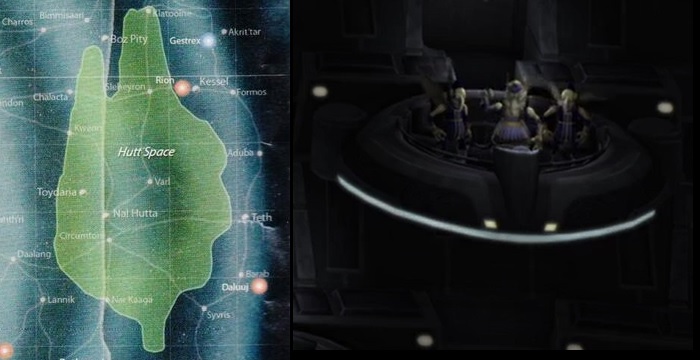
In practice, Hutt Space seems to be more of an autonomous area than a foreign nation. This is indicated by the case of Toydaria, which
was seen to be sovereign and acting politically without any consultation with the Hutts. It was considered neutral at the outset of
the Clone Wars, however this should have theoretically been the case for any planet in this region. Toydaria was also free to choose to
join the Republic early in the Clone Wars, suggesting that other worlds within Hutt Space may actually be members of the Republic.
Exactly how that would work is unclear, as Hutt Space is many times larger than any Republic sector, and has no federal administration
to organize the region politically. After their union with the Republic, a Toydarian Senate delegation is seen in the background of some
episodes of The Clone Wars, as pictured above. It has been seen that some sectors have more than one member world which
is significant enough to have a delegation in the Galactic Senate, however these must be rare exceptions, as there about the same
number of Senate pods as there are oversectors in the galaxy, suggesting about one seat per sector. Each seated planet is responsible
for representing the interests of every other populated planet in their sector. Why the Toydarians, representing a single planet, would
be given a Galactic Senate seat is an inconsistency, unless they were representing all Republic-affiliated planets in Hutt Space.
The choice to use Toydarians as a background race in the Senate is almost certainly the result of SW creators failing to consider
the larger implications and political realities of the galaxy, and is very typical of Lucasfilm's lack of concern about continuity details.
Corporate Neutrality
The Commerce Treaty of 1647 (6334 BBY) was the legal basis for the neutrality of the trade guilds and commercial interests in interstellar
conflicts, with the aim of preventing economic interests from becoming strategic objectives to be battled over, which would severely impact
civilian populations. Protected by their neutrality, interstellar corporate entities were able to act as uninvolved third parties to any conflict.
This meant that worlds which were owned or directly affiliated with large economic interests were considered to be politically neutral.
The later days of the Galactic Republic were dominated large and powerful galactic trade guilds, some of which controlled a seat in
the Senate directly. These organizations, as well as many other interstellar interests, were more powerful than any single planet, and had
massive operations which needed safeguarding. As a result, trade guilds operated huge private security armies, and usually owned military
equipment producing corporations within their conglomerates. The guilds owned thousands of planets and had their own private domains,
principally in remote regions of the Rim. As a result the guilds competed with each other in territorial squabbles and arms races. Their
privatized domains were essentially semi-autonomous nations within the Republic, limited only by the Senate's power to regulate them
and power to revoke their official charter as a sanctioned trade guild. In addition, other corporate domains existed which sometimes
included entire planets, or smaller networks of planets, which were subject to Republic law and jurisdiction, but which were otherwise
sovereign entities who were subject to the Commerce Treaty and other conventions of corporate neutrality.

The Clone Wars
Considering that the Republic clearly tolerated the existence of many thousands of worlds which did not consider themselves to be part
of the Republic, it may seem odd that the Clone Wars were fought over the issue of planets wishing to leave the Republic. The difference
in the case of the Separatist Crisis was the issue of the secession of Republic member worlds, and their intention to form a parallel
galactic government which would be a competing state and would divide the galaxy politically. The Republic, like the United States,
claims to be democratic but violently suppresses any democratic attempt by its members to leave the organization. Membership in
the Republic is therefore considered to be a permanent arrangement, and secession an act of war. This is why the Republic, and many
other examples of federal states, are somewhere between a true democracy and an empire. Much like the United States' "Civil War",
the Republic's leaders chose to move towards empire during the Clone Wars, increasing the power of the federal government while
eroding the sovereign rights of its constituent member states. This is directly alluded to by the Clone Wars being fought between
the Grand Army of the Republic verses the armies of the Confederacy of Independent Systems, which was the official name of the state
formed by the Separatists. In addition to member worlds which declared themselves neutral in the war, the neutral systems included
most of the worlds which had previously shunned participation in the Republic, as well as the worlds of the trade guilds and other
corporate entities, excluding those which declared themselves members of the Separatist state. Known neutral systems in the Clone Wars:
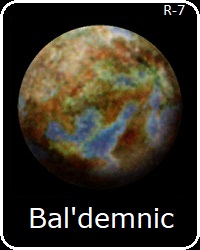

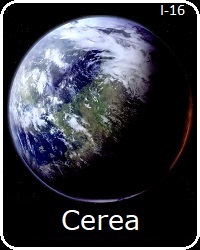



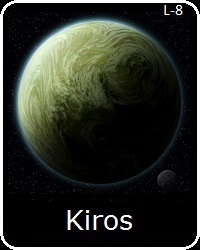


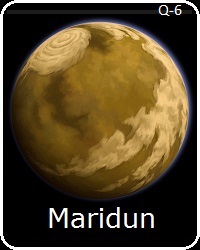

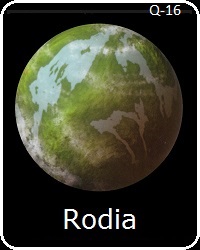

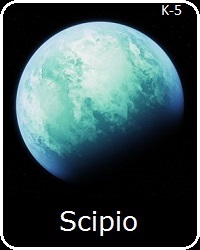
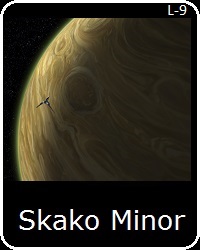

The Council of Neutral Systems was a political movement of Republic member worlds which placed their safety ahead of their loyalty to
the Republic, usually for a mix of philosophical and practical reasons. These worlds were fully justified in a legal sense in choosing to
declare themselves neutral, and many of these worlds were put in a very difficult position by the war, and had no choice but to remove
themselves as a target or face certain destruction. Over 1500 member worlds were part of the Council, including Taris, Rodia, and Kuat.
Taris and Rodia are located in heavily-contested regions far from the Core, and were relatively proximal to primary Separatist regions.
Kuat, on the other hand, is a major Core world of great influence due to its population, history, and massive orbital shipyards. Kuat is
home to one of the galaxy's largest corporations, Kuat Drive Yards, and as a major manufacturer of military equipment and starships,
it had a huge stake in the war. Its neutrality may have been in part due to the size and influence of Kuat Drive Yards, which as interstellar
corporate entity did not want to be seen as partial, and certainly no one on Kuat wished the planet to be a target. This "neutrality" did
not stop the Senators from these worlds from remaining very actively involved in Republic politics, and many were prominent members
of the Senate. This again shows that the Republic is more like an United Nations than an United States, as UN members can choose to be
involved in a war authorized by the UN security council or not, but if the US government were to go to war, a state wouldn't be allowed
to claim neutrality. Supplementary material claims the 'neutral' Senators abstained from votes involving the war, but there is no canon
evidence of that. In fact, they seemed to have been quite vocal on all matters concerning the war. It seems like every planet in the Republic
should have declared itself neutral, since it didn't stop a planet from providing materials or personnel to the Republic, building massive
fleets of star destroyers for it, or participating in its politics. It was also true that being neutral didn't definitely stop the Separatists from
invading a planet, and it certainly didn't stop them from interfering in a planet's politics, as demonstrated on Mandalore.
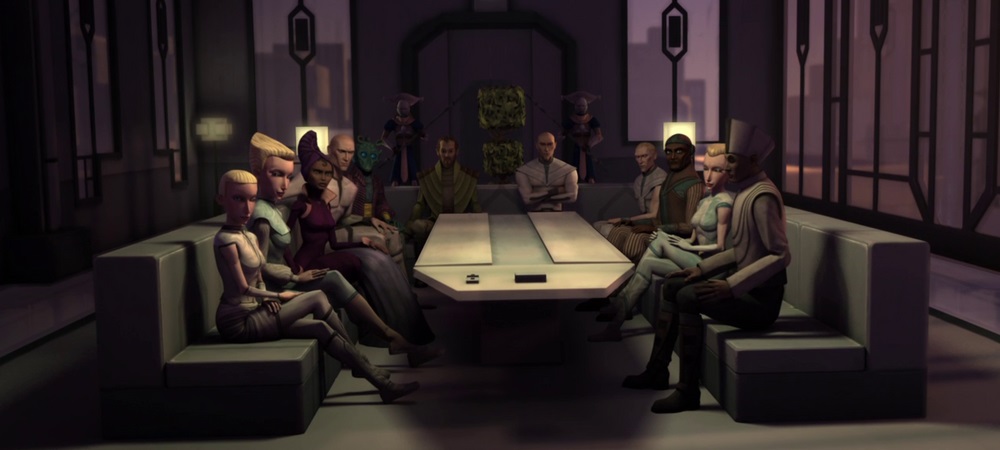
The Republic was generally more respectful of the sovereignty of neutral systems, but as the war progressed increasingly applied this
policy selectively, and in a number of instances completely abandoned it. In the case of Onderon, its Republic recognized government
had declared the system neutral at the outset of the Clone Wars. Not long after, the Separatist force invaded the planet to aid in a coup
which installed a government which joined the Separatist Alliance. The Republic invaded many worlds which had chosen to become
part of the Separatist Alliance, but usually because of their strategic position, resources, or industrial capacity. Worlds like Onderon
were usually not targeted by the Jedi Generals, who were concerned with defeating the droid army rather than invading the homes
of the honest citizens who supported it. At the same time, the events surrounding the Republic's clandestine involvement with
rebels on Onderon make it clear that the planet's declared status as a neutral system in the war made Republic intervention there
legally problematic, despite their having shifted allegiances from neutrality to the opposing side. The inverse of this same principle
was seen in the Republic's dealings with Mandalore, where that planet's neutral status prevented the Republic from taking action to
suppress a rebel group which was allied with the Separatists. This Death Watch group eventually succeeded in seizing control of
Mandalore later in the war, precipitating a Republic invasion of that neutral world. The strains of the war and growing imperialism
in the Republic had by this point led it to increasingly compromise both its ethics and its legal restrictions from interstellar treaties.
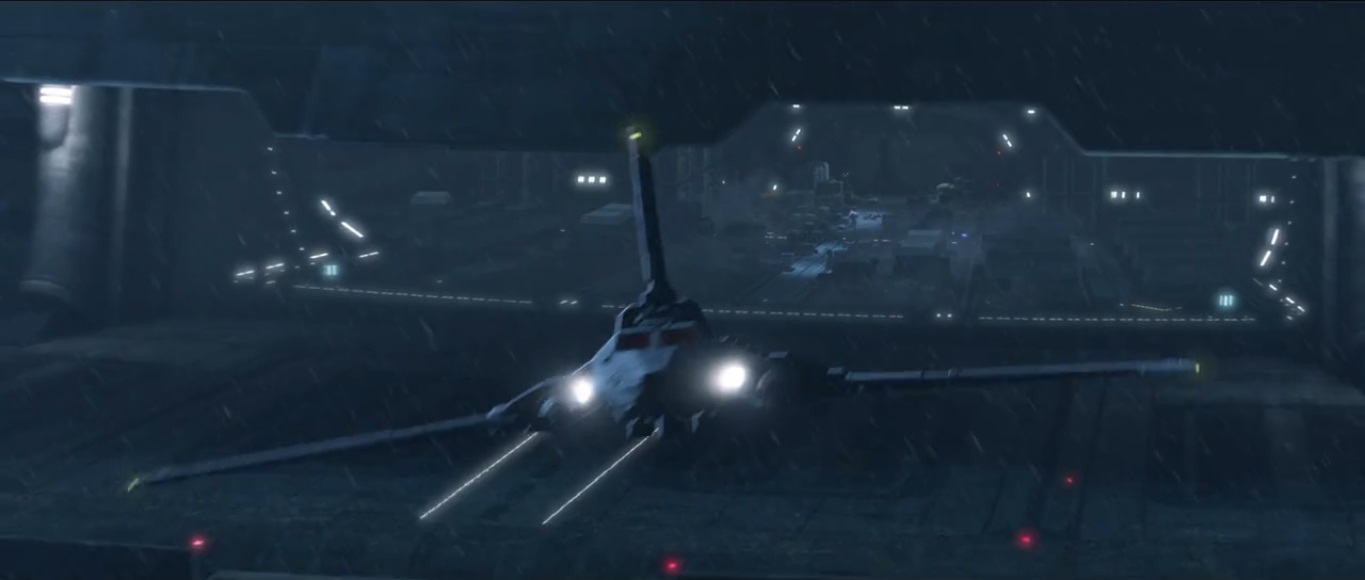
The Republic might have been willing to selectively ignore its reservations about a neutral system controlled by a pro-Separatist faction
in the case like Mandalore, however after they gained intelligence that Death Watch had become enemies of the Separatists, this coup
became an internal Mandalorian matter, and was therefore not considered to be the legal purview of the Jedi or the Republic military.
It is possible that something could have been done with support from the Senate, but Mandalore's neutrality in the war made this
"difficult" according to the Jedi. Had this coup been ongoing under ordinary circumstances, Mandalore's leaders may have been able
to garner support in the Senate for the Jedi to take action to resist the coup. Since the neutral systems had chosen not to take sides in
the conflict, asserting a measure of independence, the chances of the Senate acting were unlikely without Separatist involvement.
The Clone Wars were born out of the contradictions inherent in the Republic's jurisdictional authority and its laws regarding planetary
sovereignty, which were highlighted and exacerbated by the conflict, ultimately leading to the complete abandonment of the legal
regime protecting neutral systems. Under the Empire, most worlds in the galaxy had no sovereignty, neutrality, or independence.
return to top of page